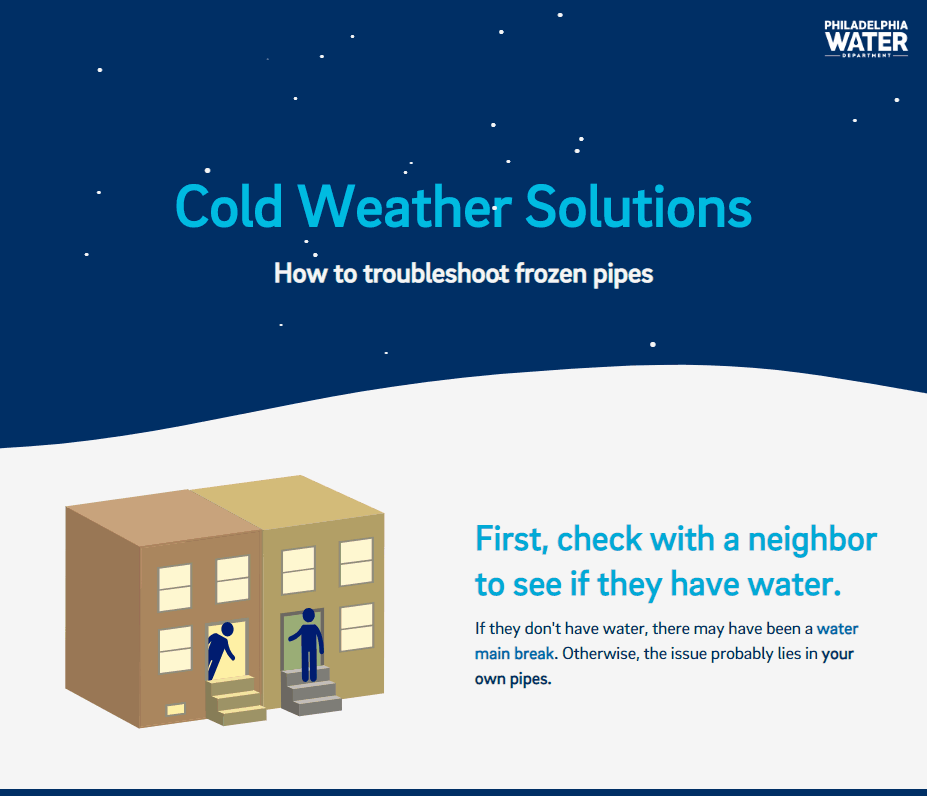While we’re usually busy dealing with that wetter form of snow (rain!), the white stuff comes with a special set of challenges and risks—for Philadelphia Water Department infrastructure, our crews out on the streets, and for our customers.
We’re asking Philadelphia residents to keep some good habits in mind when snow falls. Your assistance helps to make sure our crews and others responding to issues and emergencies can quickly tackle any potential problems as they come up.
And, if you are using salt or other chemicals to melt ice, please read this and make sure you aren’t mistakenly harming local waterways and making sidewalks unhealthy for our four-legged friends: Use salt and other ice-melts the right way
Here’s what you can do to help:
When shoveling, do not pile snow on top of storm drain inlets. Blocked storm drains can create flooding. Make sure all fire hydrants are clear of snow, visible, and easily accessible.
Make sure your valve cover and other utility access points are clear of snow and ice and are easily visible to ensure the fastest shutoff in an emergency.
Why is it so important to make sure storm drains, hydrants and utility access points are free of snow and ice?
With storm drains, we want your help in making sure they’re cleared off so melting snow can easily enter the sewer system. Blocked storm drains can create flooding, especially when warmer days follow a storm and large volumes of stormwater created by melting snow can’t drain properly. This can also create dangerous ice patches if temperatures drop overnight.
Fire hydrants, of course, are essential to public safety. A good rule of thumb when shoveling the area in front of your home or business is to clear at least 3 feet around the entire hydrant. This simple task can save crucial time that may be needed to fight a fire on your block.
Valve covers and curb boxes: Cold weather and snow can create a spike in problems with the water pipes and other utilities that connect to your property at the curb.
Sidewalks that haven’t been cleared can seriously slow response times in emergency situations such as a burst water service pipe. In the event of a burst or leaking pipe, crews dispatched for an emergency shutoff need to be able to quickly locate your curb box, which is most often located beneath your front sidewalk and covered with a (usually metal or black plastic) valve cover that’s a little smaller than a dinner plate.
When shoveling, make sure the valve cover and other utility access points are cleared of snow and ice and are easily visible so we can quickly turn the water off and prevent increased damage to your property and street. It’s also a good idea to make sure you don’t have anything valuable on your basement floor. That way, if you do end up with a frozen pipe that bursts, it will cause less damage.
Your help in making sure Philadelphia Water and Fire Department crews can do their work is greatly appreciated, and it might just help you protect your property if an emergency does happen.

